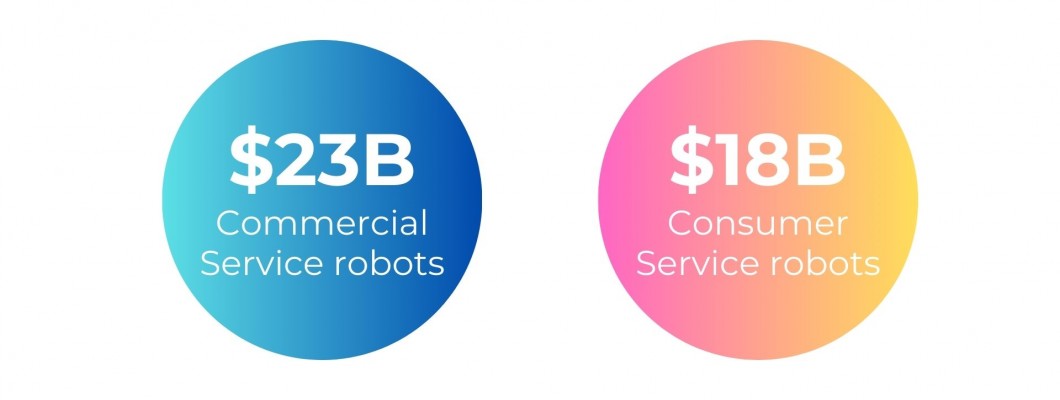
The global market for service robots is poised for significant growth, as highlighted by a recent forecast projecting revenues to reach an impressive $23 billion by 2025. This burgeoning sector is divided into two primary segments: commercial and consumer service robots, each contributing to the dynamic expansion of the industry.

Commercial Service Robots: Driving Efficiency and Innovation
Commercial service robots are increasingly being adopted across various industries, including healthcare, hospitality, logistics, and retail. These robots are designed to perform tasks that range from cleaning and maintenance to complex surgical procedures. The integration of advanced technologies such as artificial intelligence (AI), machine learning, and the Internet of Things (IoT) has enhanced their capabilities, making them indispensable in modern business operations.
For instance, in the healthcare sector, robots are assisting in surgeries, providing patient care, and even disinfecting hospital rooms. In logistics, autonomous robots are streamlining warehouse operations, improving efficiency, and reducing human error. The commercial segment is expected to be a major driver of the overall market growth, with businesses continually seeking innovative solutions to enhance productivity and reduce operational costs.
Consumer Service Robots: Enhancing Everyday Life
On the consumer front, service robots are becoming an integral part of households, offering convenience and improving quality of life. These robots include domestic helpers like robotic vacuum cleaners, lawn mowers, and personal assistants. The increasing adoption of smart home technologies and the growing demand for automation in daily chores are fueling the growth of this segment.
Consumer service robots are not just limited to household tasks. They are also being used in education, entertainment, and personal care. For example, educational robots are helping children learn coding and robotics, while companion robots are providing emotional support to the elderly and individuals with special needs. The consumer segment is expected to witness robust growth as more people embrace the benefits of robotic assistance in their daily lives.
The Global Robot Marketplace: A Hub of Innovation
The global robot marketplace is a vibrant ecosystem of innovation, collaboration, and competition. Companies are investing heavily in research and development to create cutting-edge robotic solutions that cater to diverse needs. The marketplace is also witnessing strategic partnerships and mergers, as firms aim to expand their product portfolios and reach new markets.
As the demand for service robots continues to rise, the marketplace is expected to evolve, offering more sophisticated and affordable solutions. This evolution will be driven by advancements in AI, robotics, and related technologies, paving the way for a future where robots play an even more significant role in both commercial and consumer settings.
Conclusion
The forecasted $23 billion revenue for the service robot market by 2025 underscores the transformative impact of robotics across various sectors. Whether in commercial applications or consumer products, service robots are revolutionizing the way we work and live. As the global robot marketplace continues to grow, it presents immense opportunities for innovation, investment, and collaboration. The future of robotics is not just about technology; it's about creating a better, more efficient, and more connected world.
For more insights into the robotics industry and to stay updated on the latest trends, visit the Global Robot Marketplace. The journey into the future of robotics has just begun, and the possibilities are limitless.
